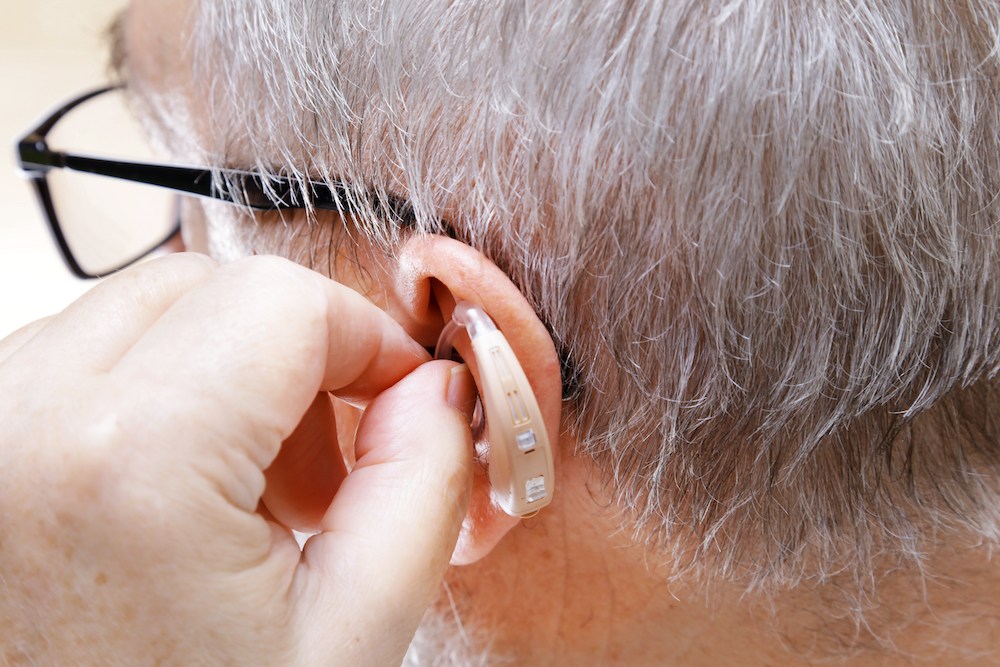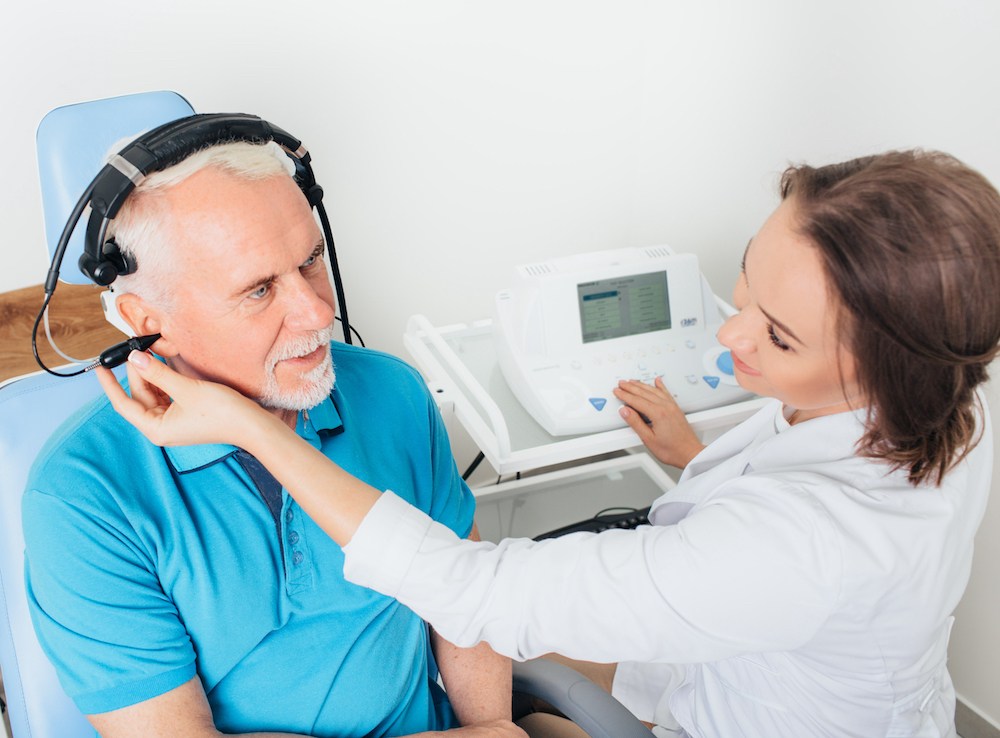How an Audiologist Helps Manage Ear Health
Audiologists do more than just test your hearing. They help you manage

By: admin | February 28, 2024
Hearing aids have come a long way, transforming from simple sound amplifiers to advanced devices packed with features designed to enhance your listening experience. These devices are incredibly important to the way you interact with the world around you, from grabbing coffee with friends to taking part in a business meeting. Many people are not fully aware of all the settings and features their hearing aids offer. By understanding these capabilities, you can use your hearing aid to its fullest potential, thereby significantly improving your quality of life.
First, let’s understand the basics of your hearing aid. These small devices are not just about amplifying sound. Modern hearing aids are sophisticated devices that consist of several key components designed to enhance auditory perception and improve hearing. These components typically include a microphone, which captures sound from the surrounding environment; a processor, which amplifies and processes incoming sounds according to the wearer’s specific hearing needs; a receiver, which delivers amplified sound to the ear canal; and a battery or power source to sustain the device’s operation.
The evolution of hearing aids spans centuries, with innovations driven by advancements in technology and understanding of auditory science. Early attempts to amplify sound for those with hearing loss date back to the 17th century with the invention of ear trumpets, followed by the introduction of carbon hearing aids in the late 19th century. These early devices were rudimentary and often bulky, offering limited functionality and effectiveness.
However, significant strides were made in the 20th century, particularly with the advent of vacuum tube technology in the 1920s, which enabled the development of smaller, more portable hearing aids. The subsequent introduction of transistor-based hearing aids in the 1950s further miniaturized devices and improved their performance. The digital revolution of the 1990s brought about a new era of hearing aid technology, with digital signal processing enabling more precise amplification and customization for individual hearing profiles.
Now, let’s delve into the advanced features of modern hearing aids. These devices offer a host of features that can significantly enhance your listening experience. For instance, some hearing aids come with directional microphones that focus on the sound coming from in front of you while reducing noise from behind or beside you. This feature can be particularly useful in situations like being at a busy restaurant where background noise can be overwhelming.
Did you know your hearing aid could connect to your smartphone? Many modern hearing aids offer Bluetooth connectivity allowing you to stream audio directly from your phone or other Bluetooth-enabled devices. This means you can listen to music, take calls and even hear your GPS directions straight through your hearing aid.
Another interesting feature is the tinnitus masker. If you experience tinnitus – a constant ringing or buzzing in your ears – certain hearing aids come equipped with a feature that produces a soothing sound to help distract you from tinnitus. These are just a few examples of how advanced features in are changing the way we use these devices.
Let’s focus on one specific technology that has made a significant impact – noise reduction. This feature is designed to minimize background noise and enhance speech, making conversations clearer and easier to follow. According to a study by the National Institutes of Health, nearly 70% of hearing aid users reported improved communication in noisy environments thanks to this technology.
Noise reduction works by distinguishing between speech and noise. The hearing aid then suppresses the noise while amplifying the speech, ensuring you can follow conversations even in loud settings. This feature is especially beneficial in social situations like family gatherings or restaurants where background chatter can often make it challenging to keep up with discussions.
Wireless connectivity in hearing aids allows for seamless integration with various devices around you. For instance, you can connect your hearing aid to your smartphone, television or music player and stream audio directly into your ears. This not only enhances sound quality but also makes it easier for you to enjoy your favorite media without straining to hear.
Imagine being able to take phone calls or listen to your favorite songs directly through your hearing aid! It’s like having a personal sound system that follows you wherever you go. So don’t miss out on this opportunity – harness the power of wireless connectivity and experience the difference it can make in your daily life.
Telecoil functionality is another important feature that can significantly enhance your experiences in public venues. Telecoils pick up magnetic signals from loop systems installed in various public places like theaters, museums and churches. They convert these signals into sound, providing a clear and direct audio feed into your hearing aid.
It’s understandable if you’ve felt frustrated trying to hear clearly in crowded or noisy public spaces. Telecoil functionality can be a game-changer in these situations. It bypasses the ambient noise and delivers clear sound directly to your hearing aid, making it easier for you to enjoy concerts, lectures or services at places of worship. It’s like having a personal sound system that cuts through the noise and focuses on what you want to hear. So next time you’re planning a visit to a public venue, remember this feature could significantly improve your listening experience.
Rechargeable batteries have changed the way we use hearing aids. Gone are the days when you had to constantly worry about changing tiny disposable batteries. With rechargeable options, all you need to do is place your device in a charging dock at night, and by morning, it’s ready for a full day of use.
This not only simplifies the maintenance process but also has significant implications for your daily life. For instance, imagine never having to worry about your hearing aid running out of power in the middle of an important conversation or during a favorite TV show. Plus, it’s an eco-friendly choice as it reduces waste from disposable batteries. So powering up your device with rechargeable batteries not only brings convenience but also contributes towards a greener planet.
Understanding how directional microphones work can help you make the most out of your hearing aid. They function by focusing on the sound coming from a specific direction, usually from in front of you, while minimizing sounds coming from other directions. This can be particularly beneficial when you’re in a noisy environment and want to focus on a conversation or sounds directly in front of you.
In addition to directional microphones, some hearing aids also offer features like wind noise reduction. This can be incredibly helpful if you enjoy outdoor activities but struggle with the interference wind can cause. It works by reducing the sound of wind blowing across the microphone, allowing for clearer conversations and better sound quality even in windy conditions. With these advanced features at your disposal, using your hearing aid becomes much more than just amplifying sound – it becomes about enhancing your overall listening experience.
AI has significantly advanced the capabilities of modern hearing aid, revolutionizing the way individuals with hearing loss experience sound. These AI-powered devices are equipped with sophisticated algorithms that continuously analyze and adjust to various listening environments in real-time. By intelligently detecting and prioritizing speech while suppressing background noise, AI-enhanced hearing aids provide users with clearer and more natural sound quality in diverse situations.
AI technology allows for personalized customization based on individual preferences and habits. These smart hearing aids can learn and adapt to the user’s unique listening needs over time, optimizing their performance for maximum comfort and effectiveness. Additionally, AI algorithms can detect and mitigate common issues like feedback and distortion, ensuring a seamless and enjoyable listening experience for users.
In essence, AI integration in hearing aids represents a significant leap forward in hearing technology, offering users greater accessibility, customization and overall satisfaction with their devices. As AI continues to evolve, it holds the promise of further enhancing the quality of life for individuals with hearing loss by delivering cutting-edge solutions that meet their specific needs and preferences.
It’s important to remember that hearing aids aren’t one-size-fits-all devices. They can be programmed and adjusted according to your specific needs and preferences. Whether it’s adjusting the volume levels, changing the settings for different environments or even choosing a model that best fits into your daily routine, there are numerous ways to tailor your hearing aid for optimal use.
With the right adjustments, your hearing aid can become an integral part of your lifestyle, enhancing not only your ability to hear but also improving overall quality of life.
Think of smartphone apps as a remote control for your hearing aid. With just a few taps on your phone, you can adjust settings, check battery life and even locate a misplaced device.
In addition to providing control over your hearing aid’s settings, these apps also offer valuable resources for managing your hearing health. They can provide tips for maintaining your device, tutorials for using different features and even reminders for appointments with your audiologist. Thus, smartphone apps play an integral role in helping you manage not just your device but also your overall hearing health.
Just like any other piece of technology, your hearing aid needs periodic upkeep to ensure it continues to perform at its best.
Regular maintenance includes cleaning your device, checking for any signs of wear and tear and replacing parts as needed. Additionally, keeping up with software updates is crucial as they often include improvements that can enhance the performance of your hearing aid. A surprising fact from the Hearing Loss Association of America reveals that 70% of hearing aid users report improved performance after a software update. This highlights the significance of regular maintenance and updates in ensuring your device operates at peak performance.
Getting comfortable with the advanced features of your hearing aid can truly revolutionize your listening experience. From noise reduction technology to wireless connectivity, these features are designed to improve your quality of life and help you navigate the world with confidence. Yet, understanding and utilizing these capabilities requires guidance from an audiologist.
At Hearing Solutions of Northwest Michigan in Traverse City, we’re committed to helping you maximize your hearing aid experience. We understand that every individual’s needs are unique, which is why we offer personalized consultations tailored to help you get the most out of your device.
Don’t let these advanced features remain untapped – take a step towards better hearing health today! Reach out to us at (231) 518-4422 for more information on how we can assist you in enhancing your hearing aid experience. It’s not just about using a hearing aid; it’s about making it work for you in the best possible way.
Tags: hearing aid features, hearing aid styles, hearing aid technology

Audiologists do more than just test your hearing. They help you manage
By: admin | November 18, 2025

Hearing loss impacts many students in schools, yet its effect on learning
By: admin | September 24, 2025

What you eat affects every system in your body – including your ears.
By: admin | May 23, 2025
